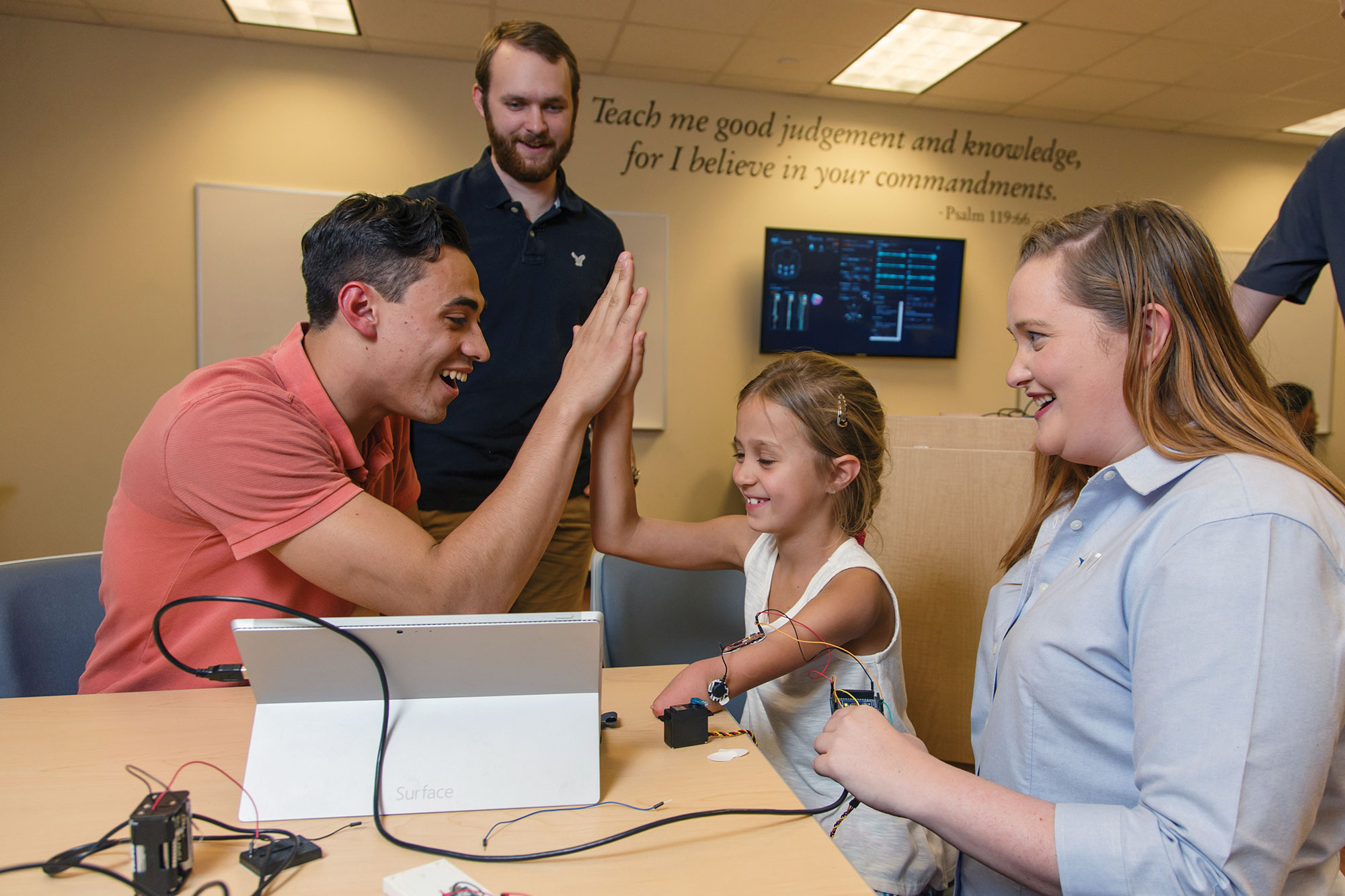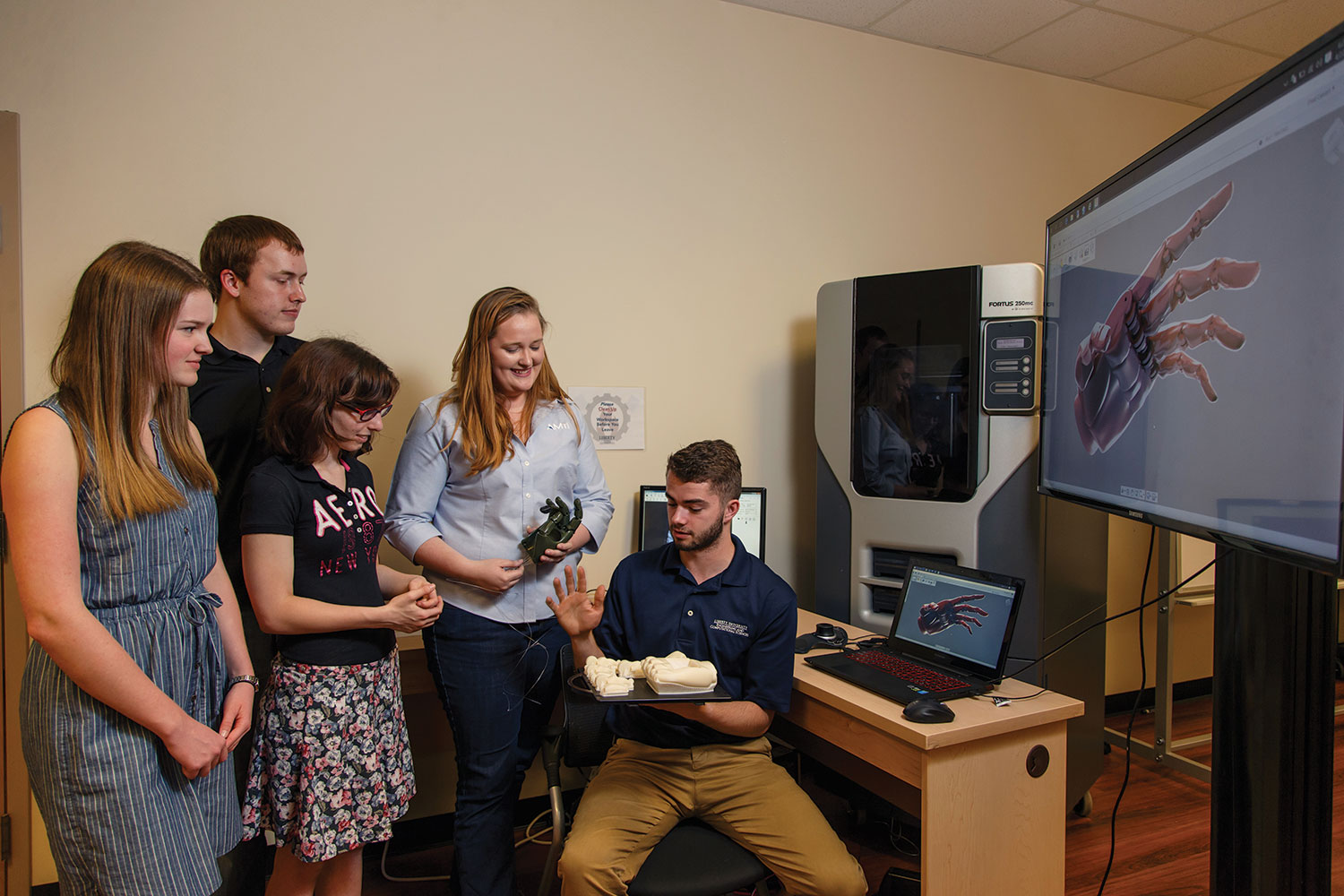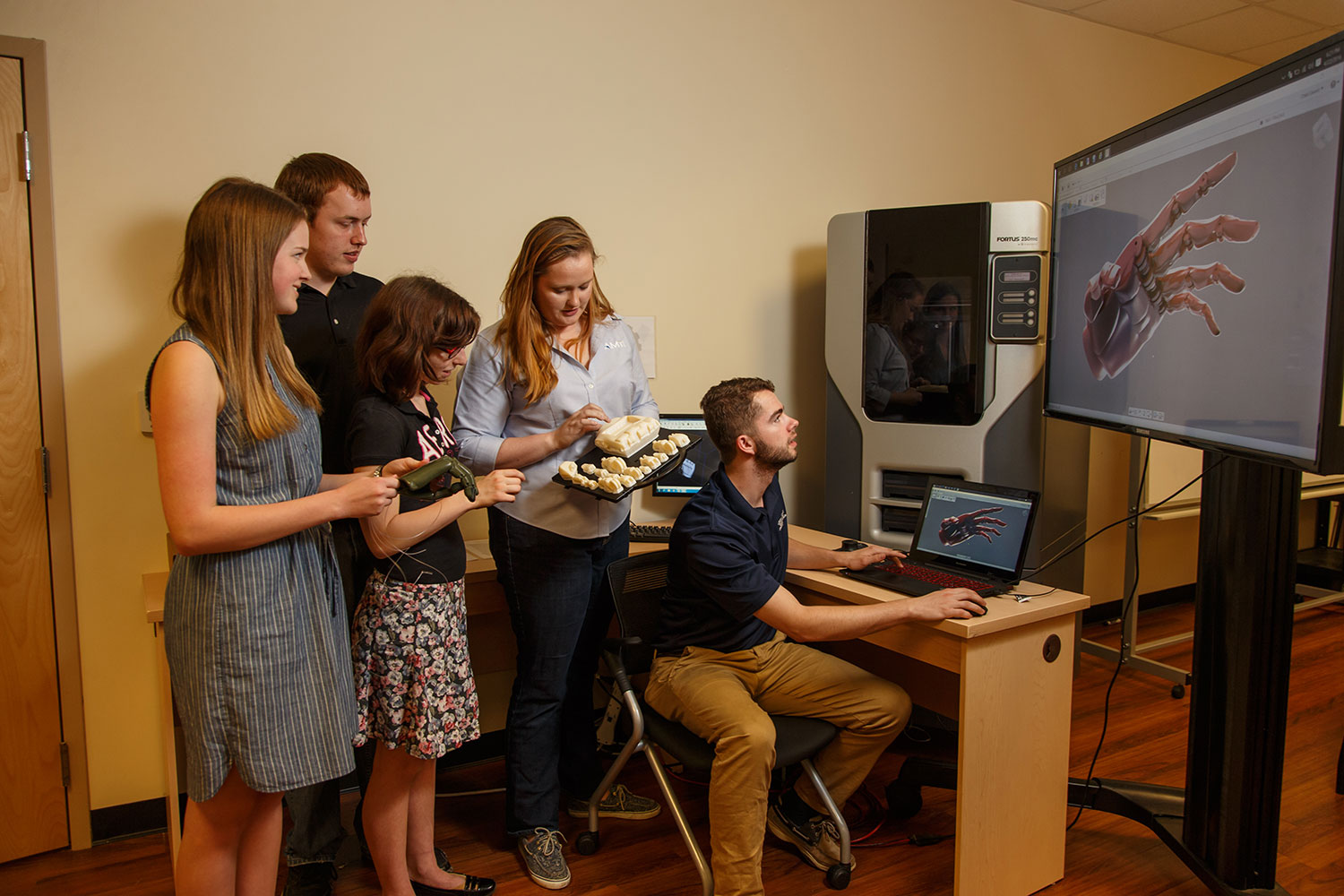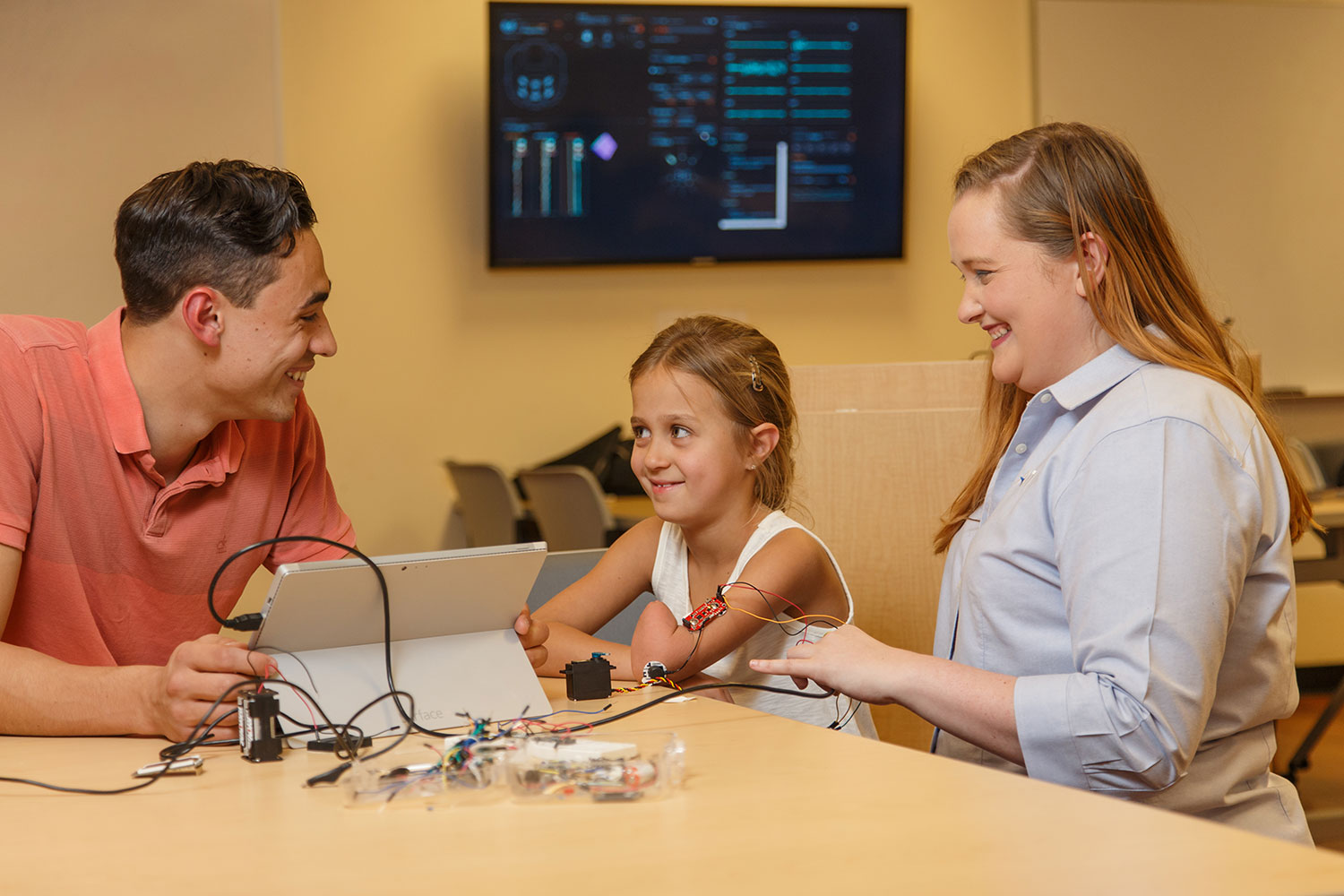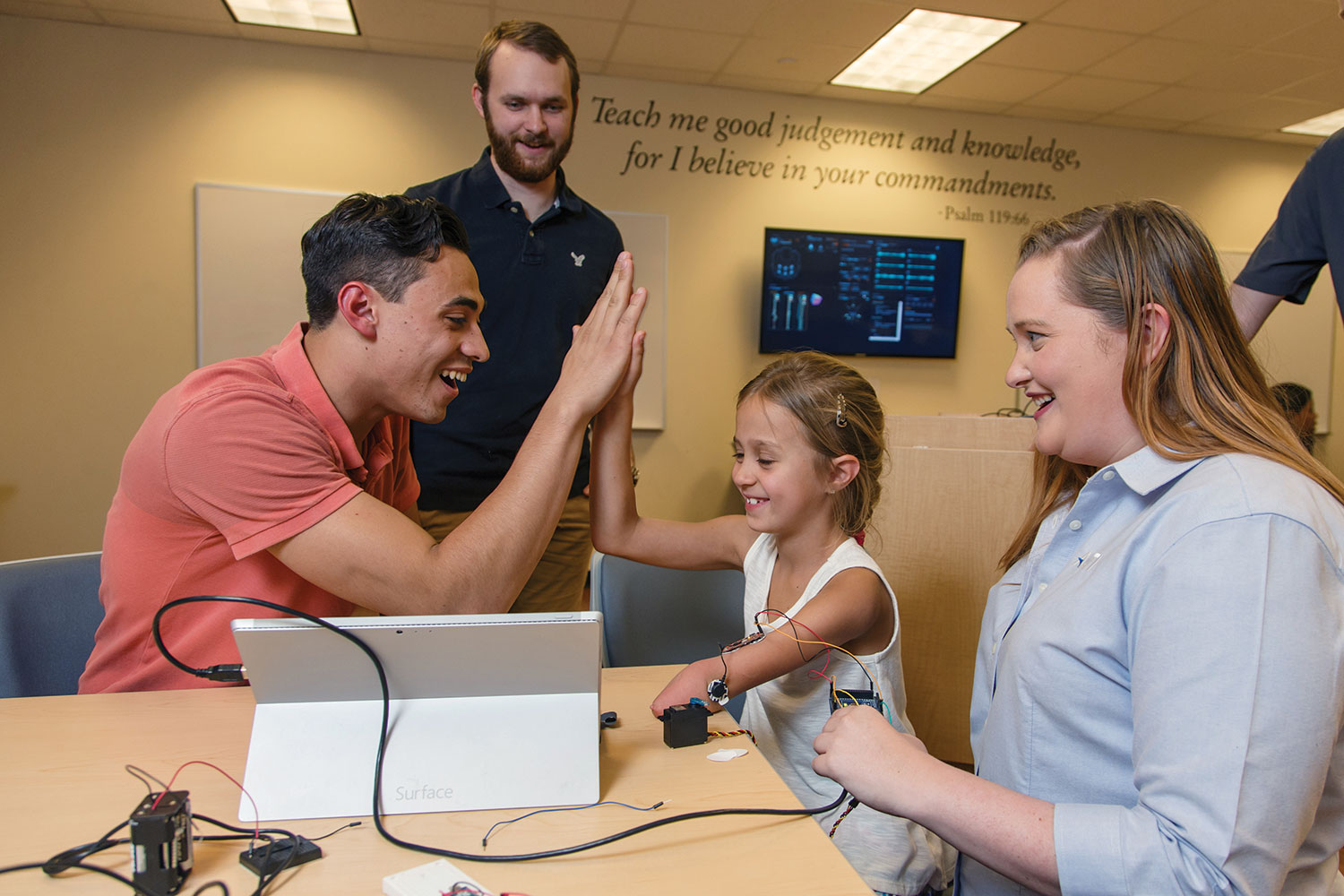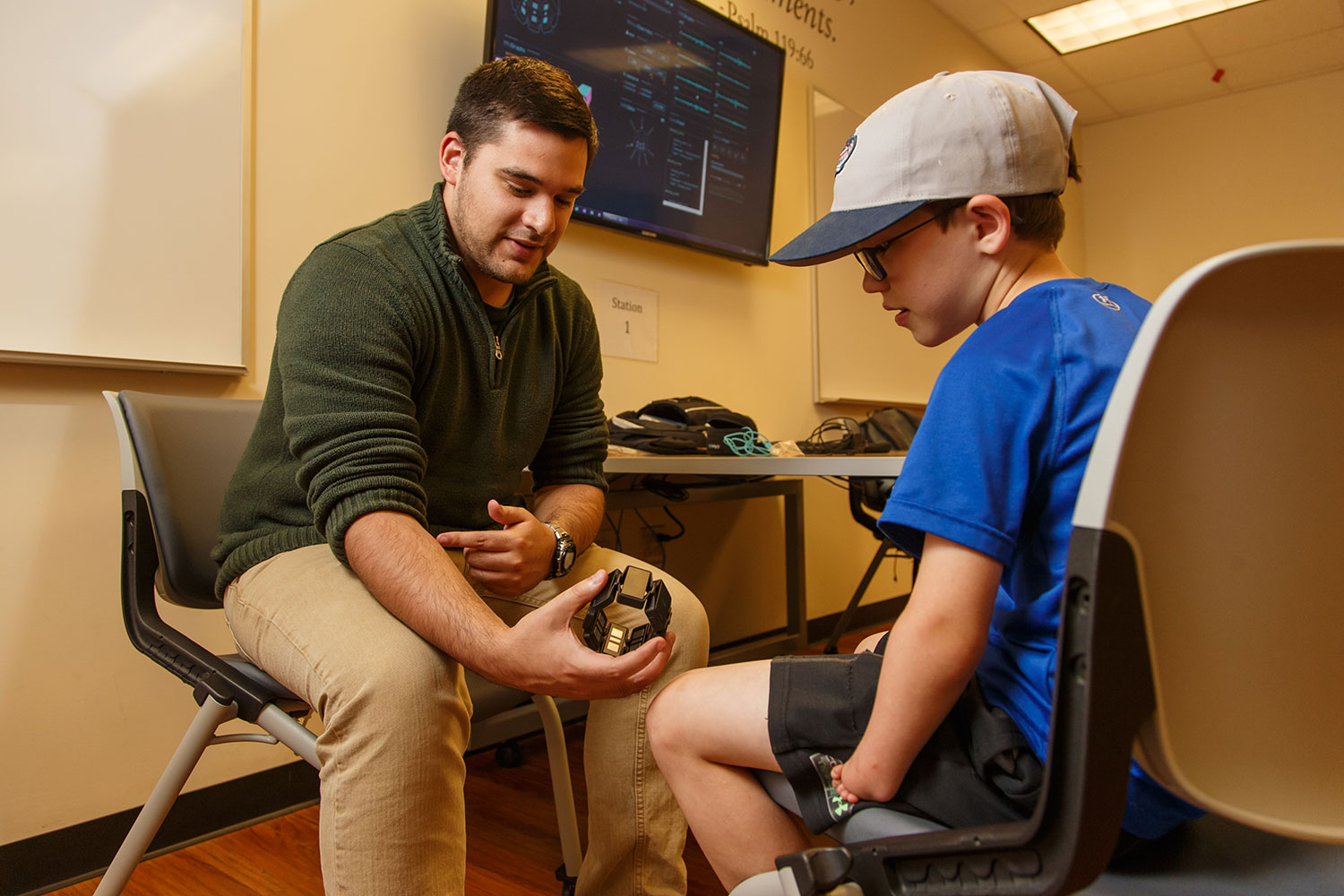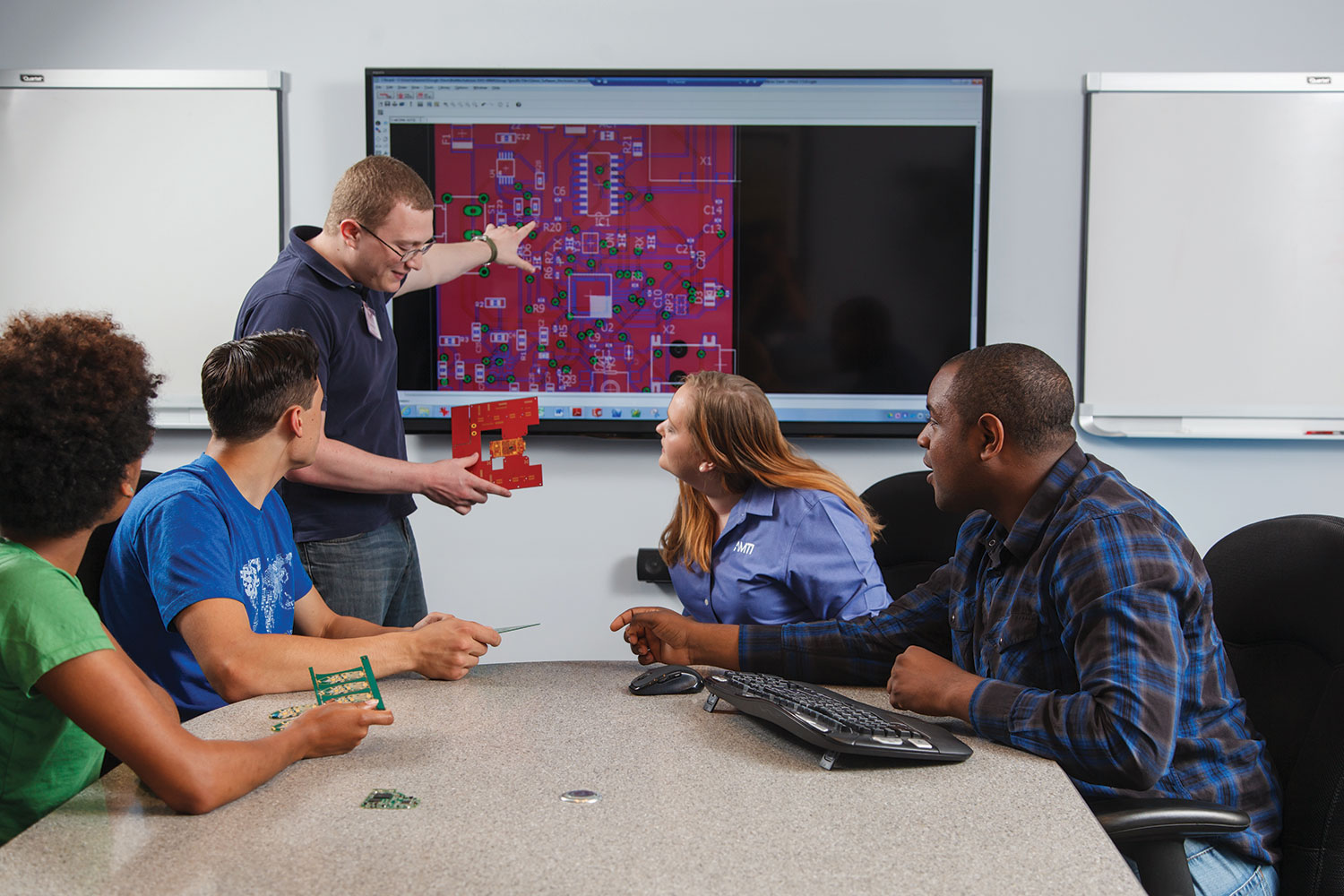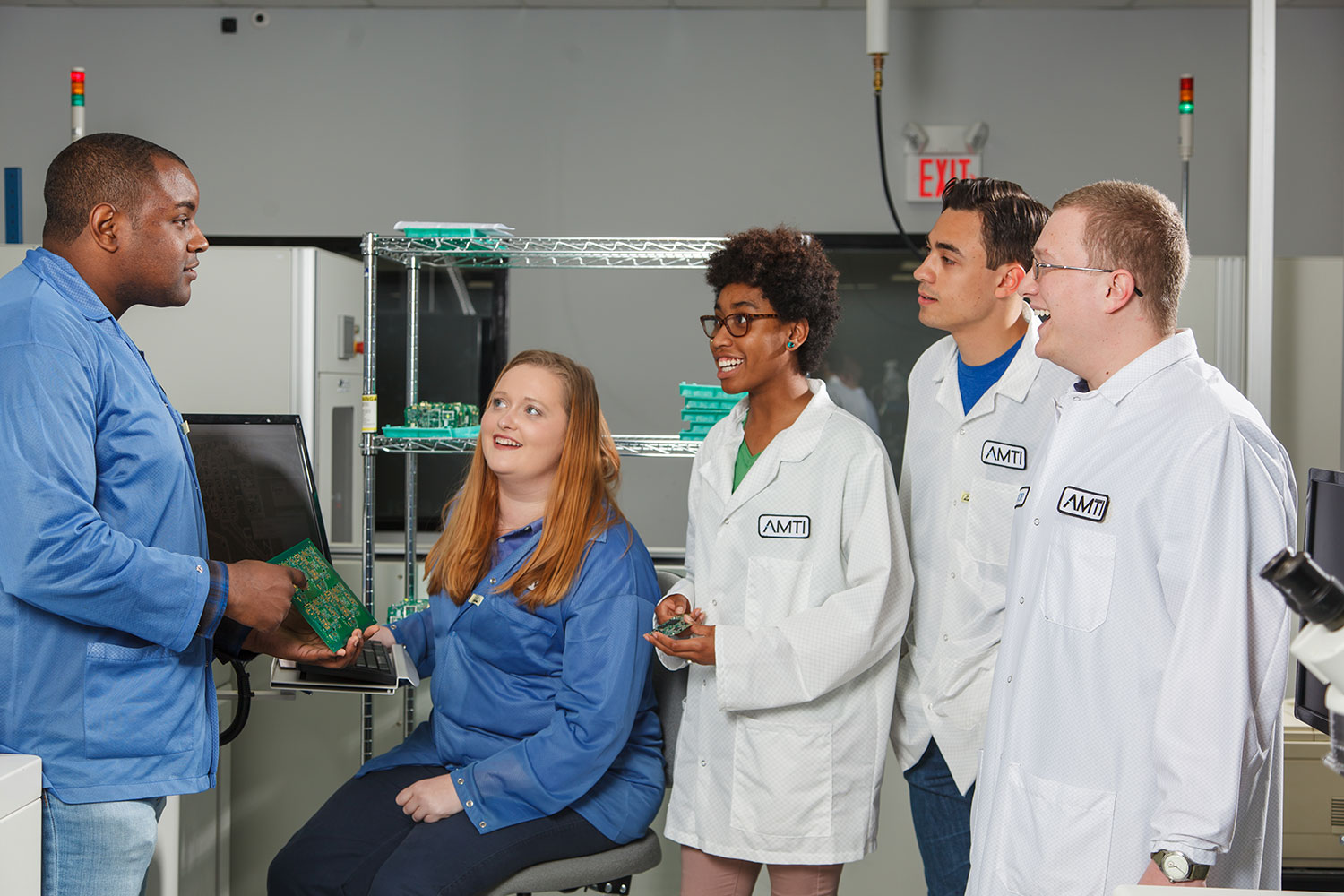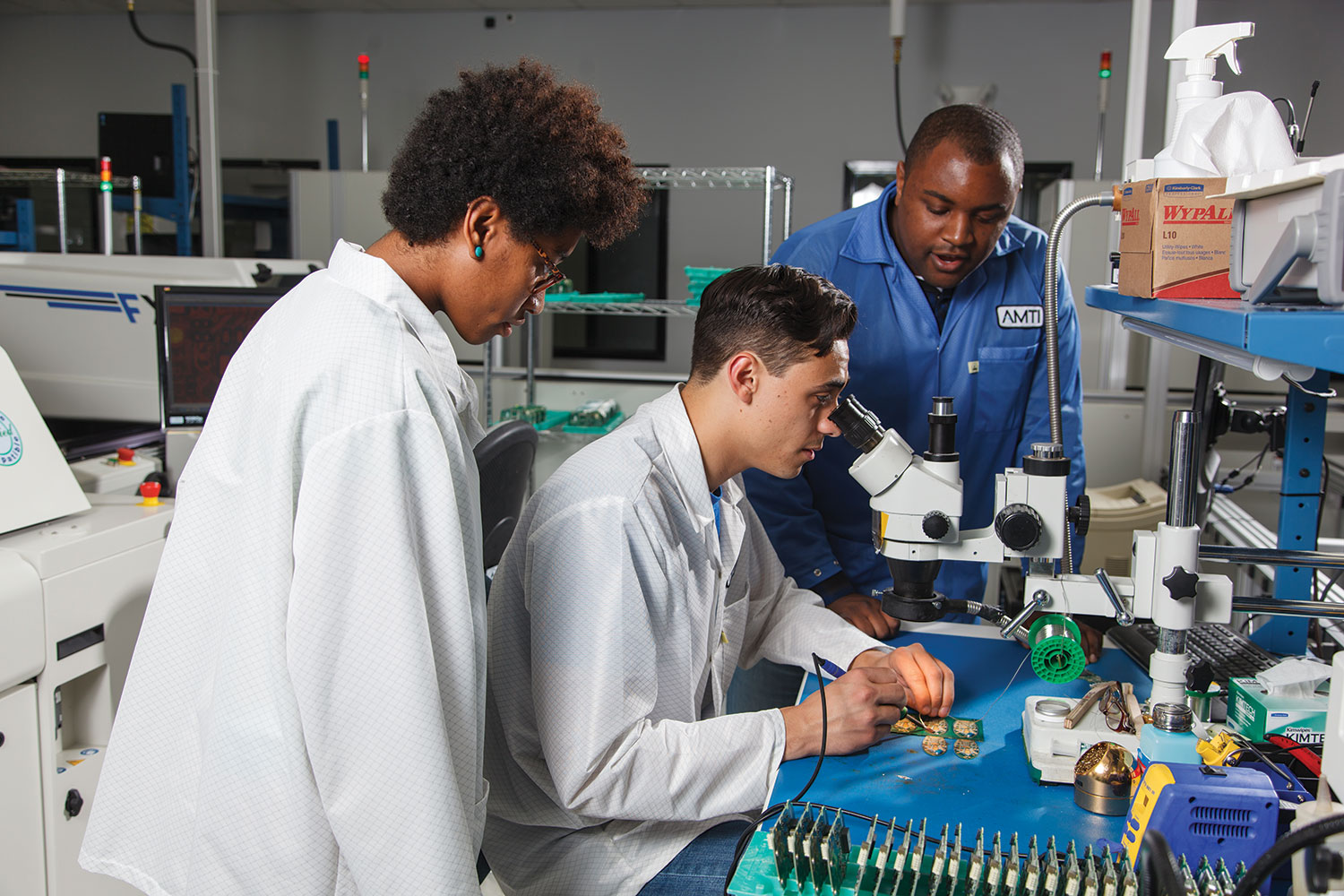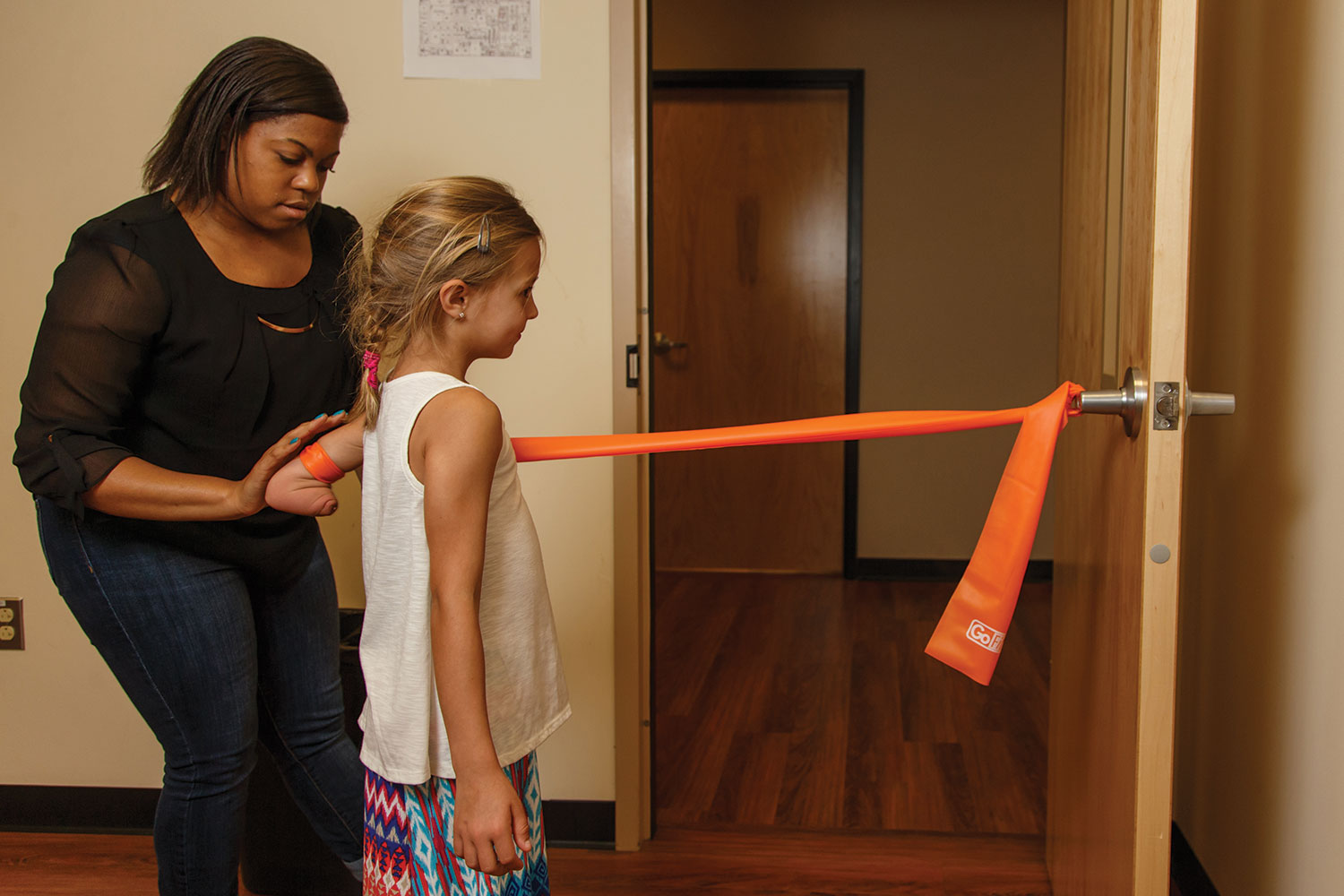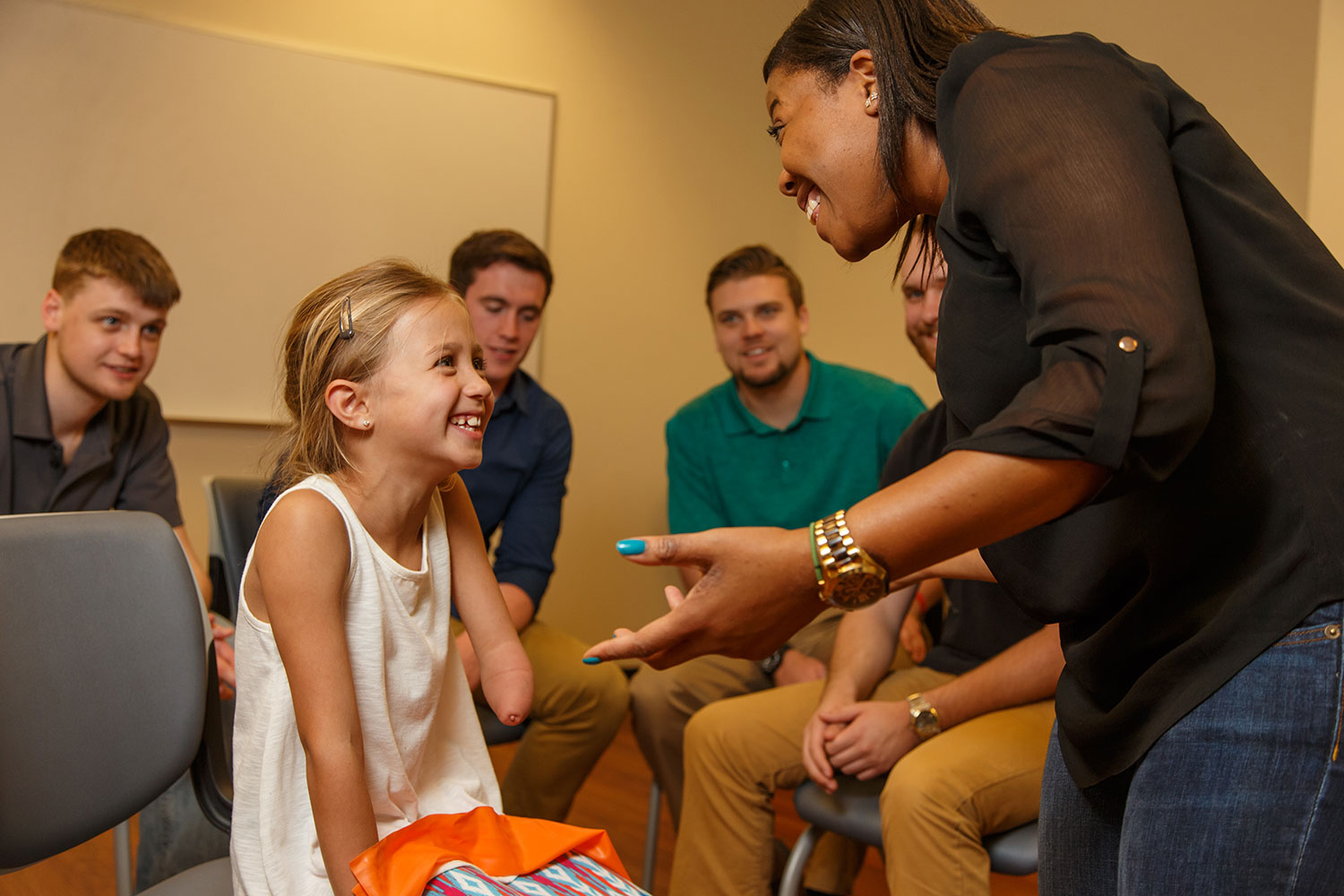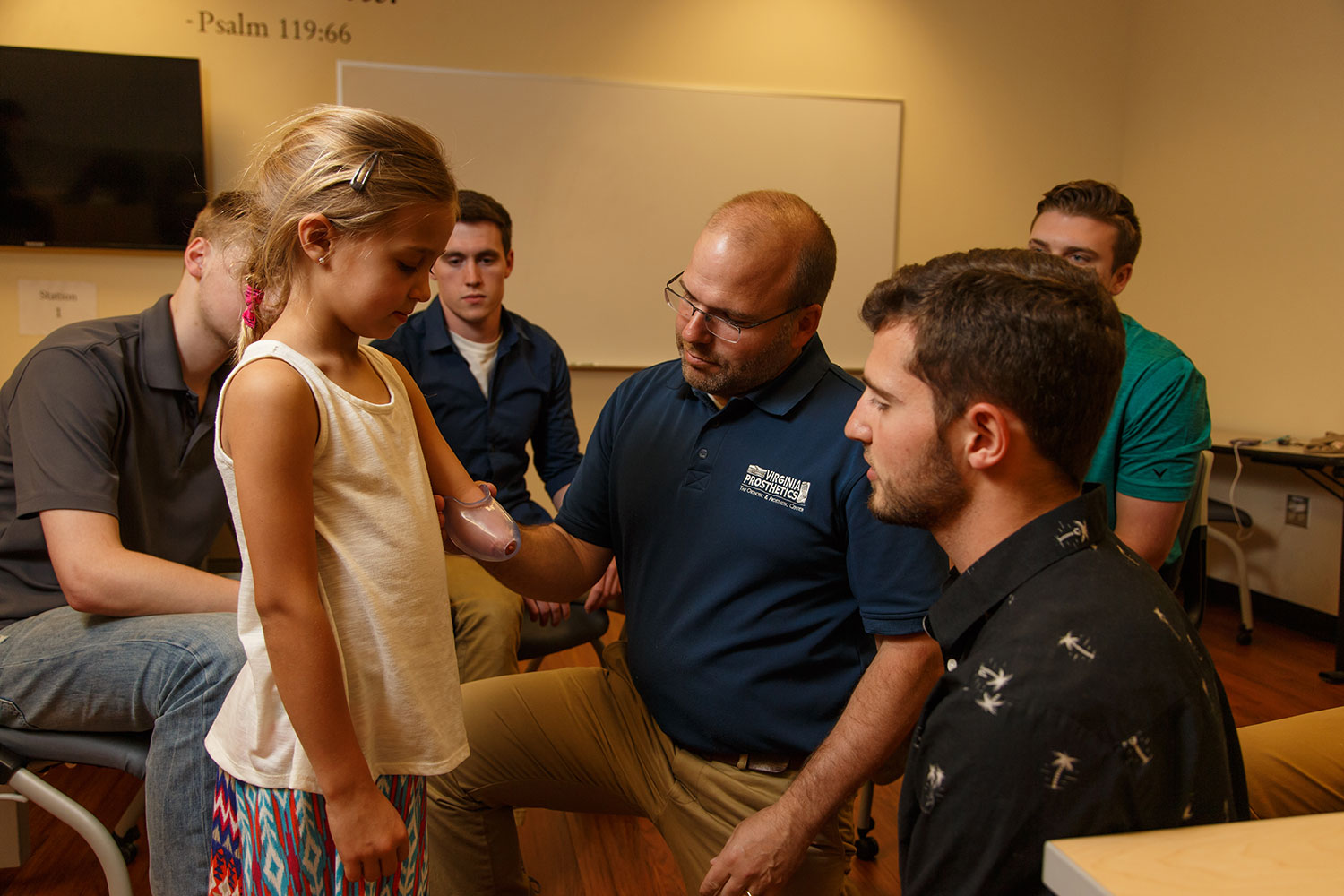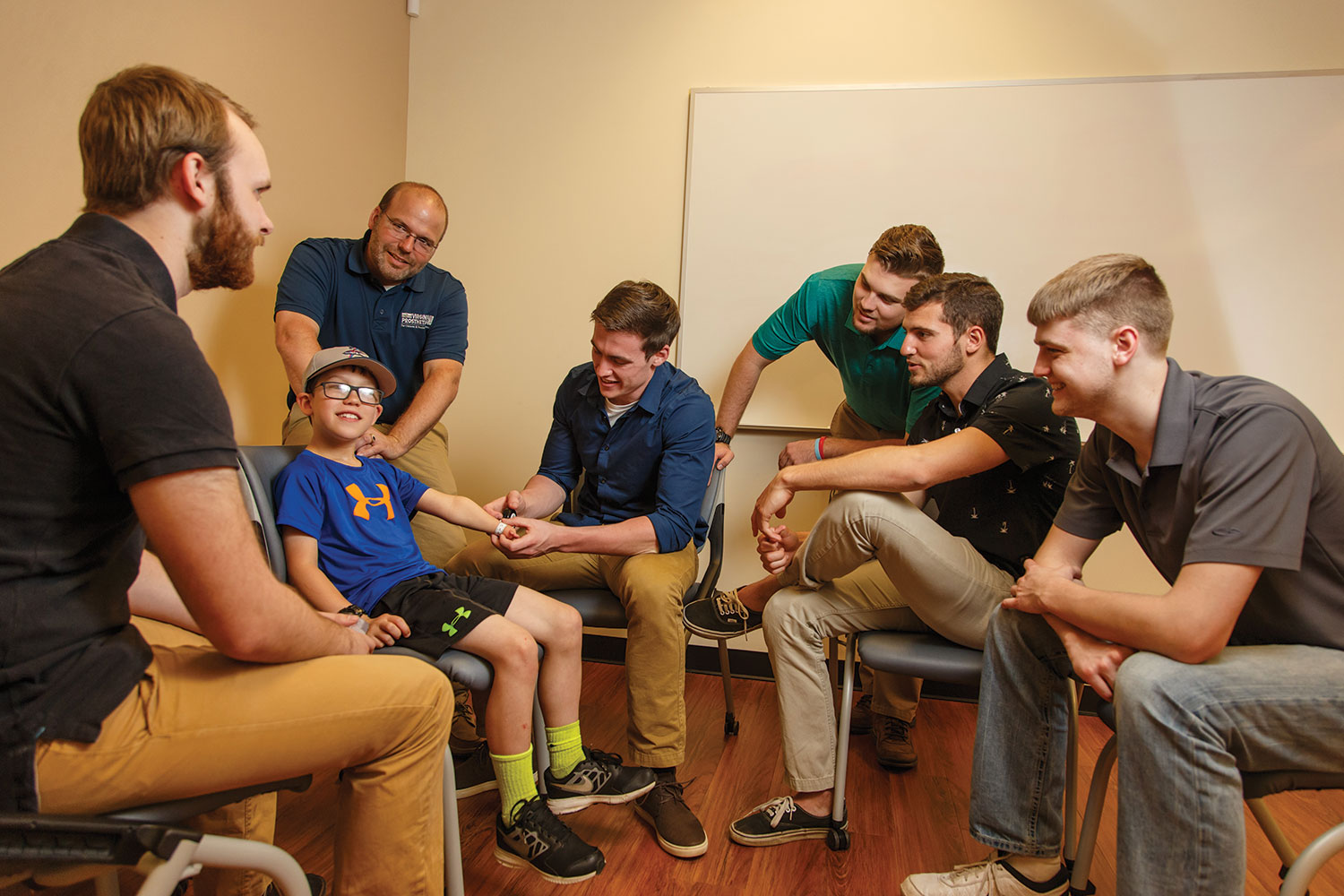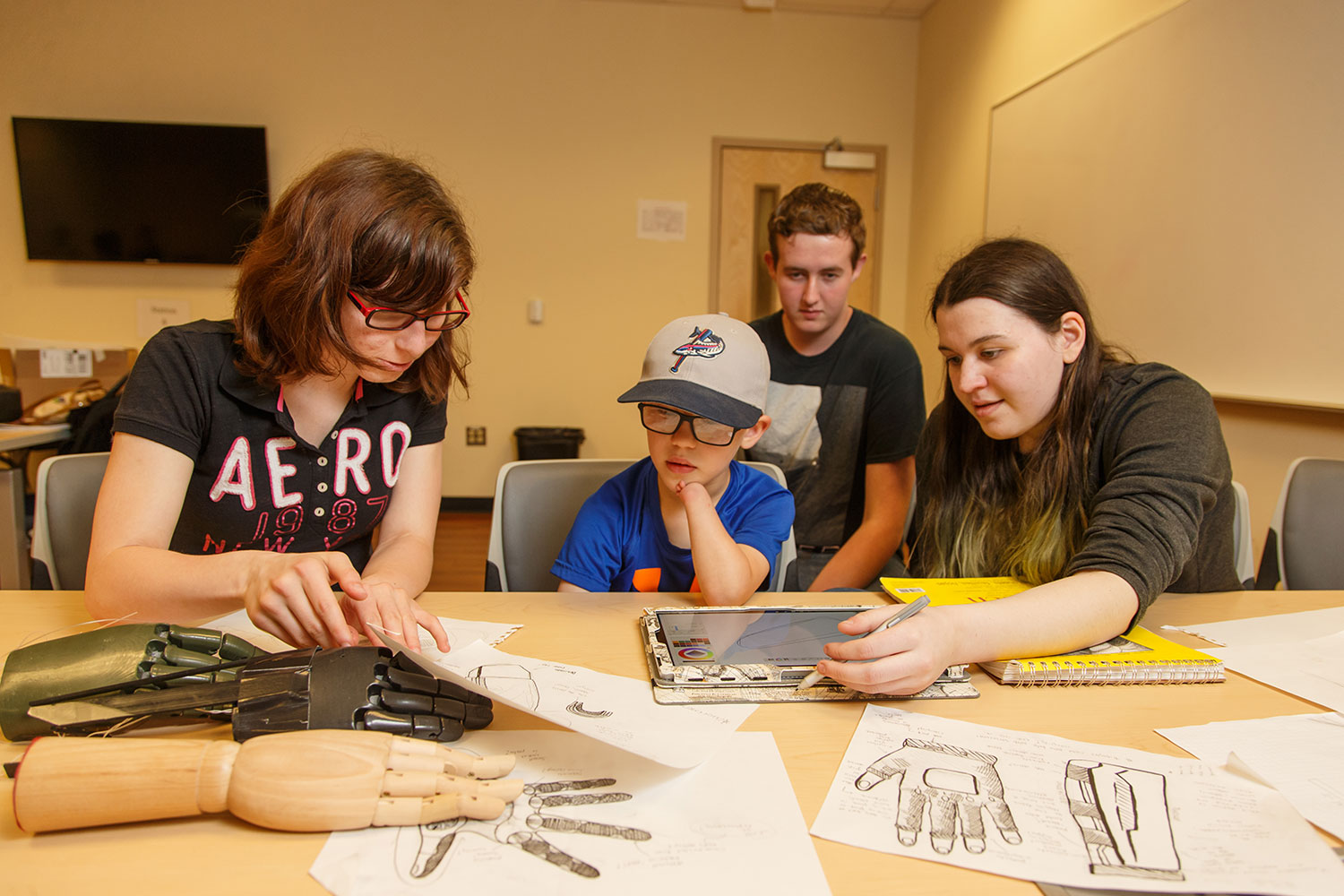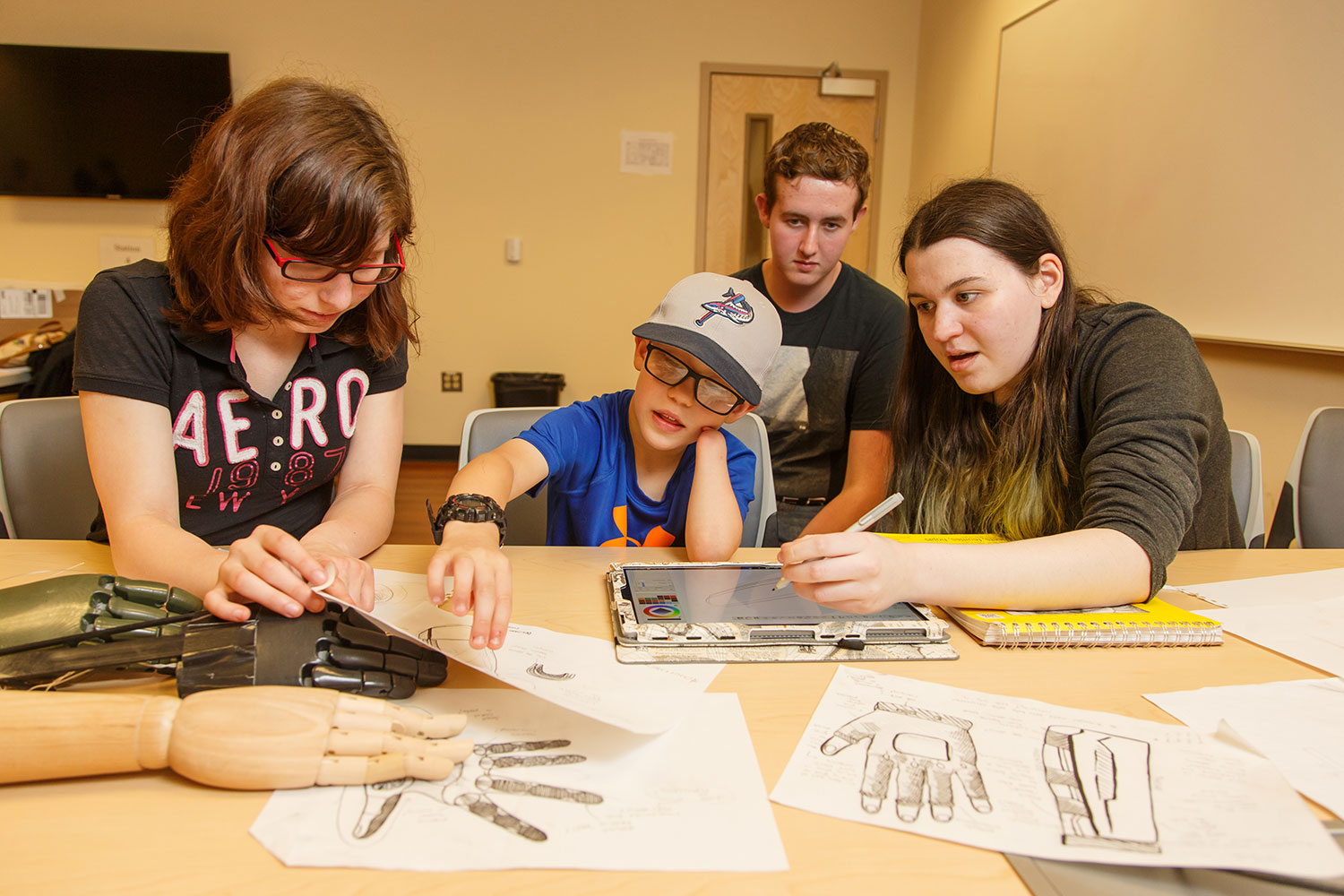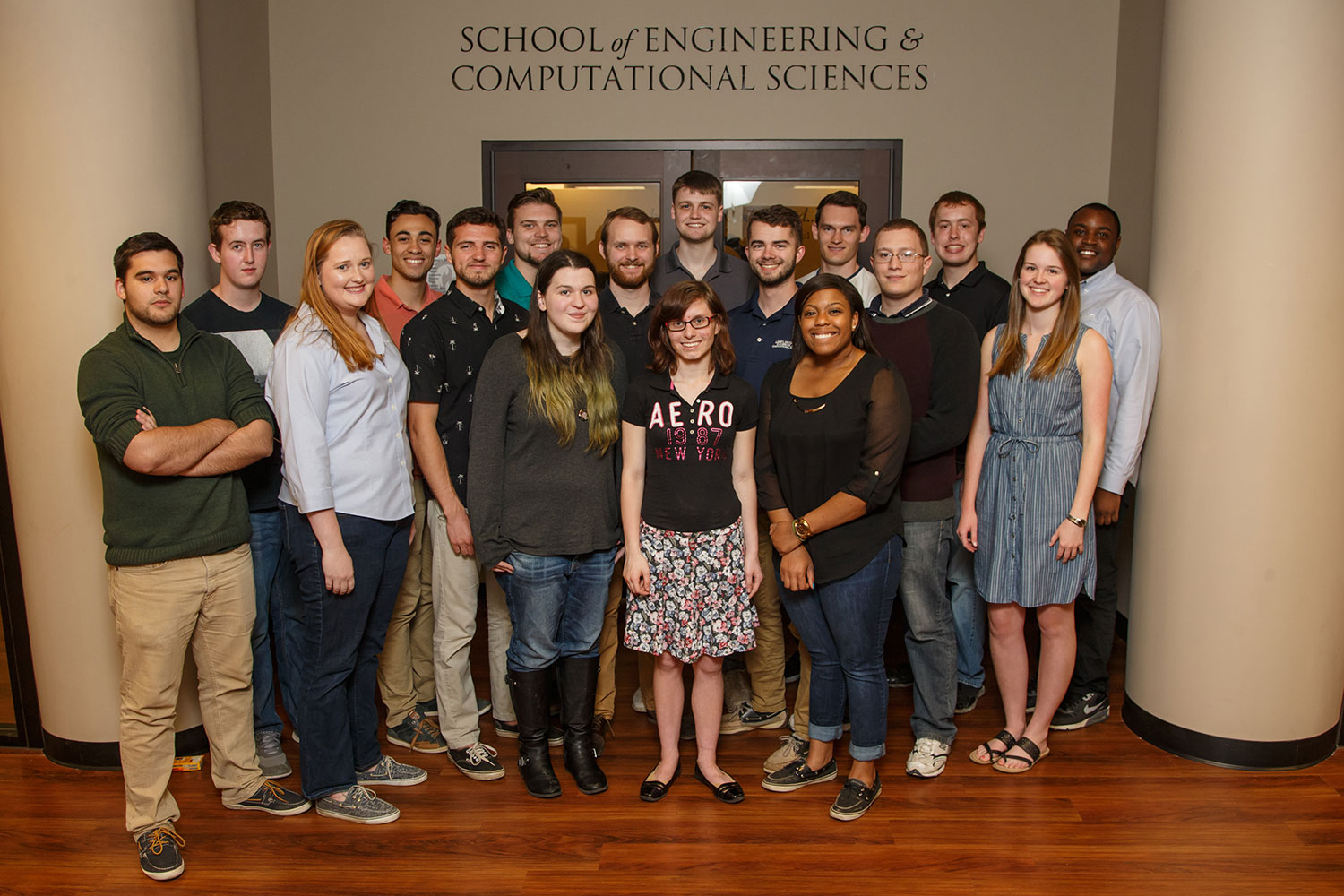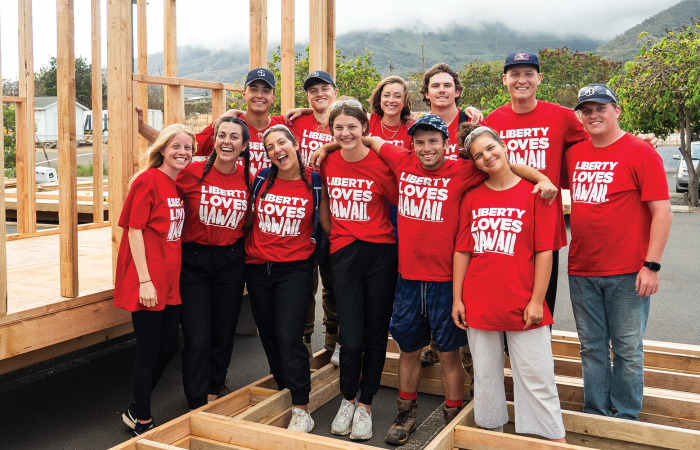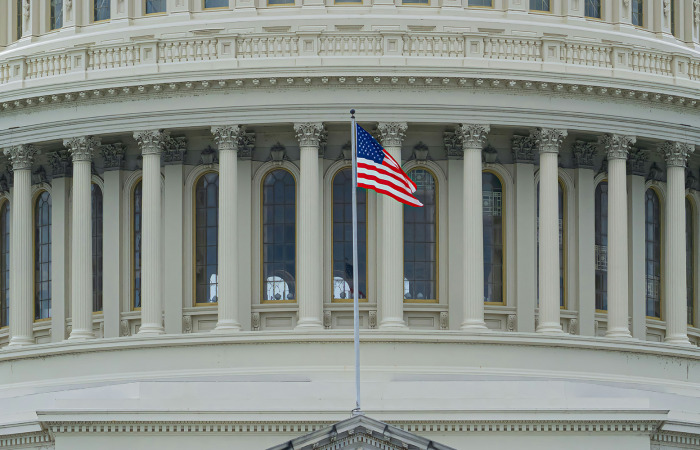Robotic hand project for children brings students and local organizations together
In Lynchburg, Va., an unprecedented fusion of higher education and local industry has resulted in a special gift that local children can use to improve their everyday lives.
After three months of design and development by Liberty University students and other local groups, the BioMechatronic EXO-Arm project yielded its firstfruits: two custom-made, fully functional robotic hands for children with only one hand. They can use the hand as a tool to make daily tasks easier.
Produced on Liberty’s 3-D printer, the hands are designed to respond to electrical impulses in muscles.
The project involved nearly 30 individuals, including 13 Liberty University students, and laid the groundwork for future collaboration among local organizations. AMTI (Advanced Manufacturing Technology Inc.), a local electronics manufacturing firm, led the project. Liberty students from the School of Business, the School of Engineering & Computational Sciences (SECS), and the School of Health Sciences joined forces with Virginia Prosthetics and Orthotics, Lynchburg College, Sweet Briar College, and Jefferson Forest High School. Everyone involved volunteered their time, expertise, and energy without compensation.
AN AMBITIOUS DREAM
The idea was conceived within the SECS about a year ago, inspired by a similar project from a nonprofit personal bionics organization. Dr. Kevin Rawls, online chair for the School of Communication & Creative Arts, and Scott Pleasants, director of engineering technology, presented a group of students (mostly freshmen at the time) with the opportunity to utilize Liberty’s new 3-D printer to help children who don’t have use of one of their hands.
“It is about a way to give back to the community using engineering,” explained Katelyn Denyer, a rising junior in Liberty’s mechanical engineering program. “God gives each of us talents for a reason. We may have a disposition to go into engineering or health sciences — and there is a reason that it’s there. But it is ministry if you make it ministry.”
The group learned that there were over 25 children who could benefit from a bionic hand in the Lynchburg area alone. With the goal of ultimately serving each one, three children were selected for the initial run. (One family decided to wait until next fall.)
For Adam Morrone, a rising junior studying computer engineering, this project was especially meaningful because prosthetics engineering is his intended profession.
“I’ve always put a big value on contributing back to society,” Morrone said. “The thought of being able to use my passion for building and creating and then doing that for the medical world is an appealing idea.”
In the fall, the team realized they needed more organization.
“We had the ambition but needed more direction,” said rising junior Nick Losee, an industrial and systems engineering student.
That’s when AMTI came on the scene. Larry Hatch Jr., AMTI’s director of strategic partnerships and marketing, provided the leadership and direction they were looking for.
The project soon became about taking an ambitious dream and putting it into action, with a quick turnaround.
“You cannot make an effort like this happen unless you are willing to throw everything at it, out of love,” Hatch said, noting that a project like this would normally require months just to plan.
Lindsay Davis, an engineer with AMTI, added, “We just want to produce something for the greater good. This is education mixing with corporations in a way that is not selfish. It shows that Lynchburg can really make an impact, even though many of the team members are so young. It is about students interfacing with veteran engineers and being able to create something meaningful.”
THE MOVING PARTS
The team started with open source (public) digital files that provided them with a basic 3-D design of a hand, but members quickly realized that the hand had to be completely redesigned to improve overall functionality.
“We wanted to bring this to the next level,” said Chad Calvert, a Liberty junior studying mechanical engineering who works for AMTI. “We wanted superior functionality but (also) something that is very customizable, very user friendly, and relatively inexpensive.”
Teams were formed to focus on attachment and usability, software and electronics, mechanics and grip, and aesthetics — customizing the look of each hand to the personality of the child. Stratasys, a 3-D printing-solutions company, donated two spools of filament for the printing.
From the outset, it was understood that no one held a more important position at the table; anyone could throw out ideas and contribute, provided they were willing to put in the work.
“Just because they’re a professional engineer did not make them higher than a student at Liberty,” Losee said. “Everyone worked together on a level playing field.”
Some of the many improvements made to the hand included using springs to add grip power and allowing the hand to default in a closed, rather than an open, position to improve energy efficiency. Joints were improved for more realistic movement and, to support all of this, circuit boards were completely redesigned and built from scratch. The hand includes a USB charger and the ability to store memory, which is useful for making adjustments.
Morrone wrote a software algorithm relating to how the muscle’s electrical impulses control the hand, basing it on the rate of flexing rather than on strength.
“The existing software was based on strength, which did not account for fatigue,” Morrone said, noting that after time the original hand design became more difficult to operate.
While engineers crafted a prototype, physical science students added valuable input into how the body works. Exercise science and pre-med students worked with the children to ensure the design was not just practical and customized to the musculature of the individual but was comfortable as well.
Alumnus Eli Rogers (’98, exercise science), a certified prosthetist and orthotist with Virginia Prosthetics and Orthotics, consulted on the project.
“There are some really neat technological advancements out there,” Rogers said. “You can have the best stuff in the world, but if the portion against their residual limb is not comfortable, they are not going to wear it.”
By using sensors, the team identified the muscles that would work best with the hand’s electronic nodes and then worked on ways to develop those muscles using various exercises, so that the children would not become too fatigued after long periods of use.
“Each kid is going to be different,” said Kyle Beaumont, a rising biochemistry senior. “We have to adapt to whatever can work with them, as opposed to just making a piece and forcing it to work.”
“There is no such thing as ‘one size fits all’ in this world,” added recent biomedical sciences graduate Mitchell Reynolds. “It is ‘one size fits one.’”
MEANINGFUL IMPACT
Like all the team members, Alexis Love, a rising junior in the exercise science program, said the highlight of working on the project was seeing the children receive their hands and watching them open up as they overcame their insecurities.
“They should not feel like they need to hide this because God has made them for a purpose,” Love said. “The fact that they are willing to let us do this for them has been an honor.”
Stephen McCombs’ 8-year-old son, Connor, received a hand. McCombs said that while children like Connor can be apprehensive to trust people, “It is a good experience for a child his age to see that there are people who care and are concerned out there.”
Connor’s mother, Rhonda, said the best part of the experience was seeing “all these people working together, giving their own time and energy and resources.”
Watching the team come up with fun ways to do the muscle-strengthening exercises and simply spending time playing with Connor was meaningful to her.
“(Connor) sees these students as just big kids; he looks up to them.”
Bonnie Rebsamen’s 8-year-old daughter Maddie was the other recipient.
“I’m just blown away,” Rebsamen said when she met the team members and saw the hand take shape. “It is really amazing to me that so many people want to help and put so much time and effort in.”
AMTI CEO Larry Hatch Sr. said the project allowed college and high school students to contribute toward solving a real problem, transitioning from the theoretical, classroom teachings of their respective disciplines to “directly experiencing the positive difference” they can make.
“An important aspect of being a value-focused company is taking a leadership role in developing an experienced, passionate, STEM workforce,” he said. “The project gives students the ability to apply what they have learned, turning facts and figures into tangible meaning. It’s an opportunity to further unlock their capabilities so that they can make an even bigger and more profound change on the world. I truly believe this is where a lifelong passion for a vocation is born, and I am very proud AMTI could be part of it.”
The EXO-Arm project demonstrates God-given human creativity at work, with multiple individuals and entities coming together to add value to His creation. While Liberty students enjoyed working side-by-side with professionals, gaining valuable résumé experience, their favorite aspect was seeing the impact that their work can have.
“People may feel that sometimes they don’t see a purpose (to their education). Then you actually see it in projects like these,” said Ben Schubert, a rising Liberty junior studying mechanical engineering. “These children’s lives will be changed forever.”
The project is far from complete. The higher goal is to share the new, improved design so that people across the world can print the hands themselves, making it both more affordable and more accessible for families.
Several Liberty students are committed to staying on the team until they graduate. Hatch Jr. is hoping to see the program grow, with more Lynchburg-area organizations getting involved. They hope to have a lasting global impact as the designs are shared and other groups adopt this regional model of collaborative innovation.
